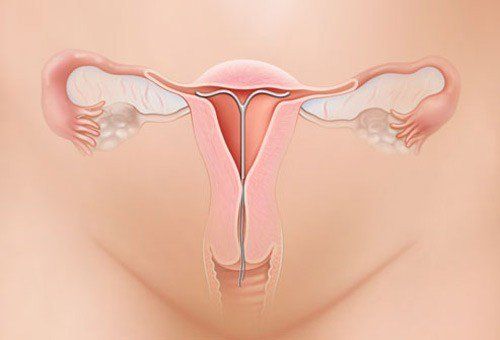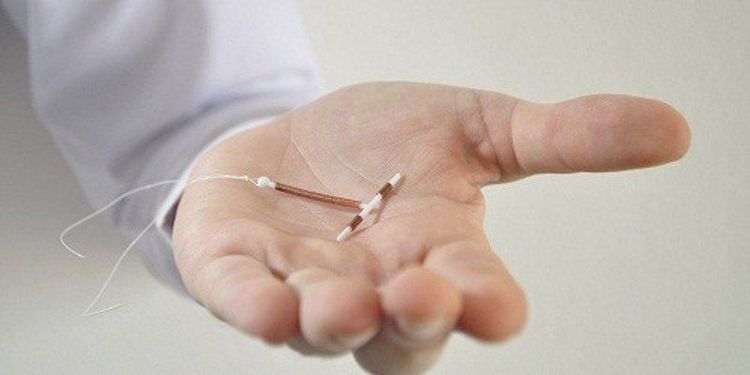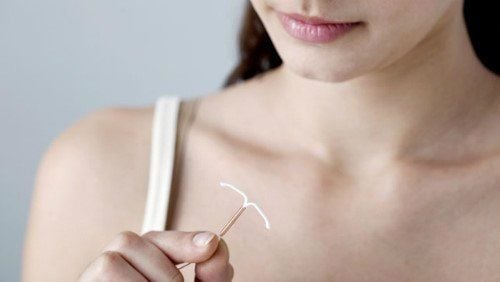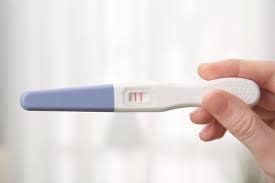This is an automatically translated article.
The article is professionally consulted by Specialist Doctor II Lai Thi Nguyet Hang - Department of Obstetrics and Gynecology - Vinmec Ha Long International General Hospital.
IUD insertion is a contraceptive method used by many people because of its safety, high efficiency, simple procedure and low cost. For the most effective contraception, women should insert the IUD at an appropriate time after giving birth.
1. What is an IUD?
An IUD (also known as an IUD) is a small plastic device that is inserted into the uterus. Currently there are many types of IUDs with all designs such as S-ring, T-shaped, bow-shaped with copper wrap... But the most commonly used ones today are T-shaped and bow-shaped rings with copper wrap.
IUD is a common method of contraception, the effectiveness of the IUD in preventing pregnancy is up to 99%, can last 5 years. The product has the advantage of being relatively durable, comfortable, easy to use and inexpensive, rarely causing side effects.
2. Mechanism of contraception of the IUD
The main mechanism of action of the IUD is to cause an inflammatory reaction in the uterine lining, change the biochemistry of the endometrial cells and do not create conditions for the implantation of a fertilized egg.
For IUDs with copper: Contraceptive efficacy is enhanced by the continued release of copper into the uterine cavity, which increases inflammation and can cause uterine contractions that prevent implantation of the egg. . Copper ions also change the biochemical properties of cervical mucus, change the lining of the uterus, thereby affecting the motility, activation and viability of sperm and the ability to implant. egg - sperm.
For the progesterone ring: Progesterone prevents the cyclic activity of the endometrium due to the high concentration of progesterone compared to estrogen, which does not facilitate the implantation of a fertilized egg in the lining of the uterus. Progesterone can also inhibit ovulation.

3. Advantages of IUD
The effect of the IUD is to prevent sperm from reaching the egg as well as preventing the egg from implanting in the uterus.
In addition, the IUD has other advantages such as reducing blood loss during menstruation, reducing menstrual pain, reducing the appearance and growth of uterine fibroids - an effect due to the effect of progesterone, reduce the risk of pelvic inflammatory disease.
Most IUD products are reasonably priced. Contraception rate is high from 95-97%, can prevent pregnancy for up to 5 years. Once the ring is removed, the chances of getting pregnant are very high.
4. Disadvantages of IUD
Despite the benefits, not everyone can use this method of contraception, especially if used incorrectly, not according to instructions will cause a lot of harm to the woman.
The biggest disadvantage of the IUD is the risk of pelvic inflammatory disease, infertility, and ectopic pregnancy. If a woman who is using an IUD becomes pregnant, the chance of an ectopic pregnancy is higher than if a woman is not using any contraception.
If the IUD is left in the uterus for too long compared to the time prescribed by the doctor and the manufacturer, there will be risks such as: the ring breaking and penetrating the uterine muscle, the risk of unwanted pregnancy
Women Women after IUD insertion will often experience more and more abdominal pain, a sharp pain when pressing on the lower abdomen, vaginal bleeding profusely and for a long time. There are also other symptoms such as fever, painful urination, pain during sex.
5. How long after cesarean delivery can I insert an IUD?

Three months postpartum is the right time to put the ring. If you have a cesarean section, you should wait 6 months before inserting the ring. If giving birth vaginally, the ring should be inserted at 3 months after giving birth, when menstruation reappears. If you still have not had your period 3 months after giving birth, then insert an IUD after correctly checking that you are not pregnant to rule out an early pregnancy. After that, you will be injected with progesterone continuously for 3 days, wait for the bleeding to stop, 3-7 days after the bleeding stops, then proceed to insert the ring, no later than 7 days. If after cesarean section, the uterus is still bleeding heavily, the IUD should be inserted within half a year after the surgery. Should apply some other methods of contraception such as using condoms, ejaculating outside the vagina while waiting for the ring to be inserted.
6. Choose an IUD for postpartum women
During the postpartum period, the uterine cavity is quite small, the uterine wall is also thin, so it is necessary to determine the appropriate ring size by the doctor. By the time breastfeeding is stopped, the uterus has returned to normal, and will need to be changed to another ring of a larger size.Vinmec International General Hospital is one of the hospitals that not only ensures professional quality with a team of leading medical professionals, a system of modern technological equipment, a cool and safe space for medical examination and treatment. complete and maximum sterilization. Not only examination and treatment, here customers will be consulted by a team of doctors to recommend effective and safe contraceptive methods for each specific object.
Please dial HOTLINE for more information or register for an appointment HERE. Download MyVinmec app to make appointments faster and to manage your bookings easily.














